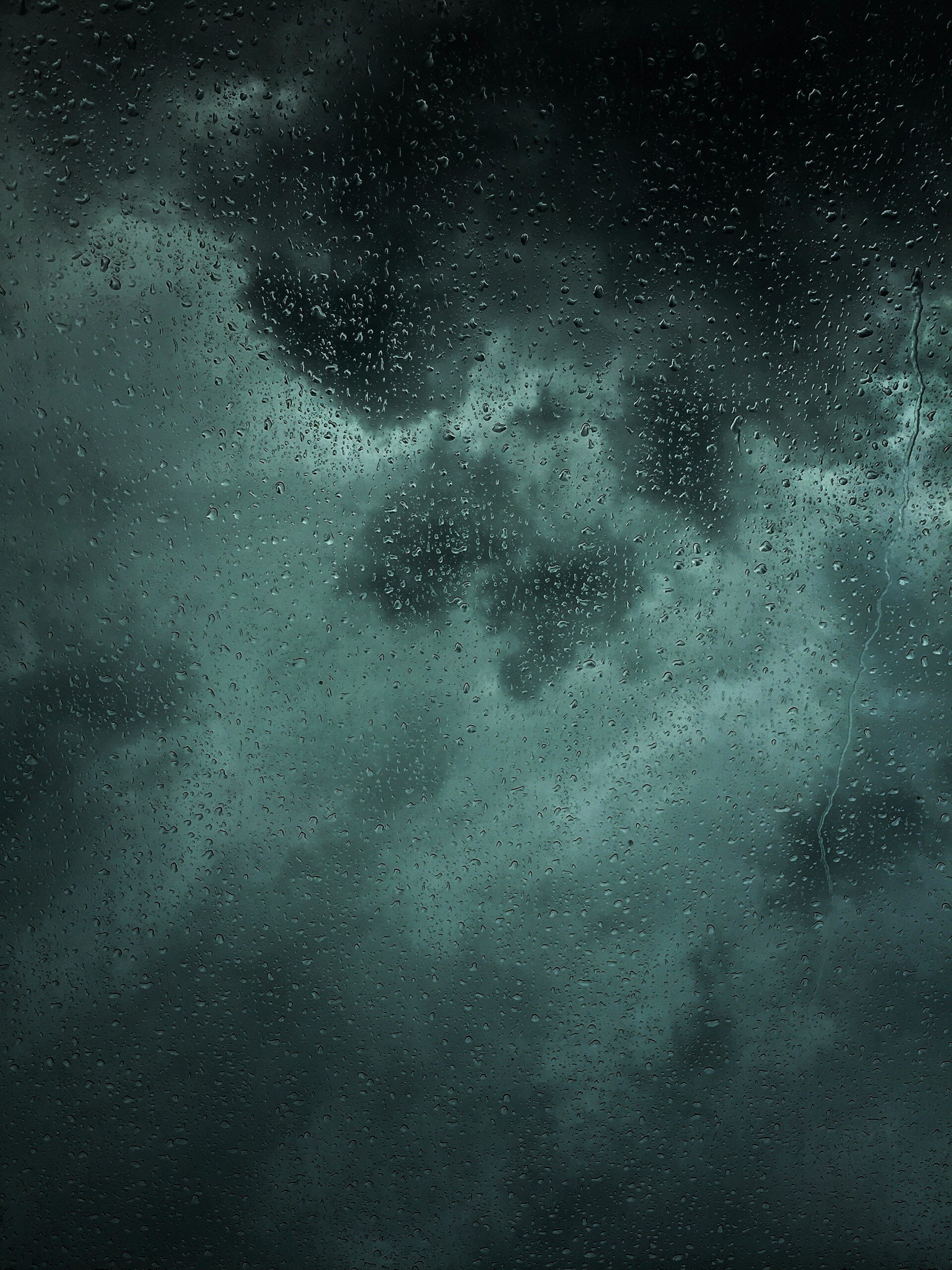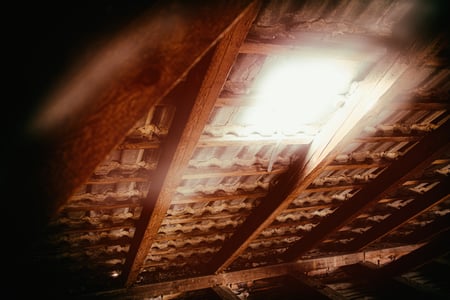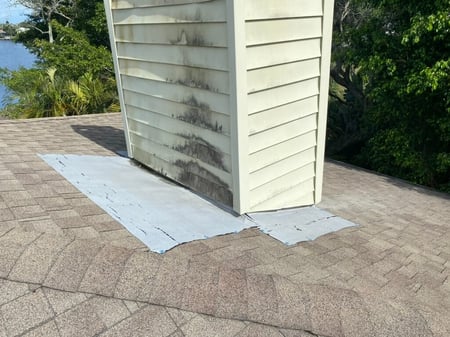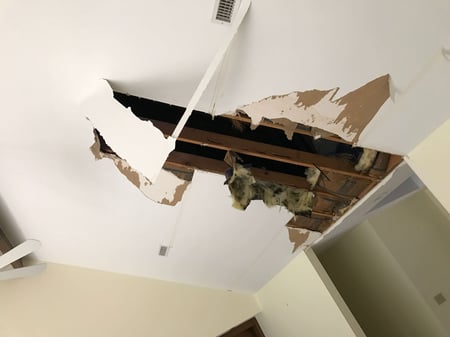Why Is My New Roof Leaking?
October , 2024 | 7 min. read

So, you’ve just invested in a brand-new roof, confident that it will provide years of protection for your home. But now, there’s an unmistakable drip, drip, drip, coming from your ceiling. The sinking feeling that accompanies a leaking roof, especially a new one, is more than just frustrating - it’s downright alarming.
Before you spiral into panic mode, the RoofCrafters team wants you to take a breath! You’re not alone, and there’s usually a logical reason behind the issue.
All of this being said, let's explore the potential causes of a leaking new roof, how to troubleshoot the problem, and what you can do to fix it. Plus, we’ll offer tips on preventing leaks in the future. Let’s dive in!
Poor Installation

One of the most common reasons for a new roof to leak is poor installation. Roofing is a highly technical job that requires attention to detail, experience, and skill. If shortcuts were taken during the installation process, or if the roofer wasn’t adequately trained, there’s a higher risk that something was missed.
Common signs of poor installation include:
• Improperly aligned shingles: If shingles aren’t properly aligned, it leaves gaps for water to seep in.
• Underlayment issues: The underlayment is the layer between your roof deck and shingles. If it’s not installed correctly, it won’t provide a proper barrier against moisture.
• Unsealed flashing: Flashing around chimneys, skylights, or vents needs to be sealed to prevent leaks. Improper flashing installation can allow water to seep into vulnerable areas.
The good news is that most professional roofing companies provide warranties for their work, so if poor installation is the cause, the contractor should come back to fix it.
Damaged or Missing Shingles
Even with a new roof, shingles can become damaged or go missing due to high winds, heavy rains, or other weather-related factors. If a shingle gets cracked, torn, or blown away, it compromises your roof’s ability to keep water out.
Water can easily find its way into these vulnerable spots and begin causing damage. If you notice that your roof is leaking soon after a storm, it’s a good idea to inspect for any visible damage from the ground or, better yet, have a professional roofer take a closer look.
Clogged Gutters and Downspouts

Gutters are an essential part of your roofing system. They guide water away from your home, protecting both your roof and foundation from water damage. If your gutters are clogged with leaves, twigs, or other debris, water can’t flow freely, and it might pool up on your roof.
This standing water can eventually make its way into your home, even if your roof is brand new.
To prevent this, regularly clean your gutters, especially after a storm or during seasons when leaves fall. In some cases, you might need to install gutter guards to help minimize the debris build-up.
Roof Vent Leaks
Roof vents are necessary for allowing heat and moisture to escape from your attic, but if they’re improperly sealed, they can become a major source of leaks. This often happens when the rubber boot around the vent cracks or breaks. The flashing around the vent also needs to be properly installed and maintained, or it can let water in.
If you suspect your roof vent is the source of the leak, a professional roofer should be able to identify and fix the problem by replacing the vent or applying new flashing.
Flashing Failures

Flashing is a thin material, usually made of galvanized steel, that’s installed to direct water away from critical areas of your roof, such as chimneys, skylights, and valleys where roof sections meet. If your flashing isn’t installed properly or gets damaged, it can allow water to seep into your home.
Flashing failures can occur for several reasons, including poor installation, age, or damage from severe weather. Regular inspections can help catch flashing issues before they turn into major leaks.
Improperly Installed Skylights
Skylights are a beautiful addition to any home, but they can also be a major source of leaks if they’re not installed correctly. Water can seep in around the edges if the skylight flashing isn’t properly sealed or if the installation wasn’t done according to the manufacturer’s instructions.
If your skylight is leaking, you might notice water pooling around the edges or streaks of water running down the walls. A professional roofer can assess whether the skylight needs to be resealed or if there are more significant installation issues that need to be addressed.
Condensation Buildup

Sometimes, what seems like a roof leak is actually condensation buildup in your attic. If your attic isn’t properly ventilated, moisture can accumulate, especially during colder months. This condensation can drip down, making it seem like your roof is leaking, when in fact, it’s an internal issue.
To prevent condensation, ensure your attic has proper ventilation and insulation. Installing ridge vents or soffit vents can help promote airflow, reducing the chance of moisture buildup.
Extreme Weather Conditions
Even the best-installed roof can suffer damage during extreme weather events like hurricanes, hailstorms, or heavy snow. Water might penetrate your roof during these events, leading to leaks. High winds can lift shingles, and hail can crack them, creating vulnerabilities for water to seep through.
If your area has experienced severe weather and you notice leaks soon after, it’s a good idea to have a professional roofer assess the damage. In some cases, your insurance might cover repairs due to storm-related damage.
Roof Penetrations

Roof penetrations like chimneys, plumbing vents, and satellite dishes are often vulnerable areas when it comes to leaks. If the flashing around these penetrations isn’t sealed properly, water can find its way in.
Plumbing vent pipes, for example, have a rubber gasket that can degrade over time, allowing water to enter. If you’ve recently installed a satellite dish or other equipment on your roof, it’s worth checking to see if the installation caused any damage or if proper sealing was done.
Roof Slope and Design Issues
The slope and design of your roof play a major role in its ability to shed water efficiently. If your roof has a low slope or flat areas, water might not drain off as quickly as it should, increasing the risk of leaks.
Certain roofing materials are also more prone to leaks when used on low-slope roofs, so if you’ve got a roof design that doesn’t align with the best practices for your region’s weather conditions, this could be the culprit.
A professional roofing contractor can assess whether your roof’s design is contributing to your leaks and suggest solutions like adding additional drainage or modifying the slope.
What Should You Do If Your New Roof Is Leaking?

If your new roof is leaking, the first step is to contact your roofing contractor. Most reputable roofing companies offer warranties on both materials and workmanship, so they should be willing to come out and assess the situation.
Here’s a quick checklist to follow:
• Document the leak: Take photos of the water damage and note where the leak is happening. This will help your contractor identify the source of the problem.
• Check your warranty: Review the warranty provided by your roofing contractor to understand what’s covered.
• Act quickly: Don’t delay in addressing a roof leak. The longer water penetrates your home, the more damage it can cause.
How to Prevent Future Leaks
Prevention is always better than repair. Here are some tips to help you avoid roof leaks in the future:
• Schedule regular roof inspections: A professional roofer can catch minor issues before they become major problems. It’s a good idea to have your roof inspected at least once a year and after any major storm.
• Maintain gutters and downspouts: Keep your gutters clean and free of debris to ensure proper water drainage.
• Address ventilation issues: Ensure your attic is properly ventilated to avoid condensation buildup.
What Should I Do if My New Roof is Leaking?
All in all, a new roof should provide you with peace of mind, not a bucket under a drip. If your new roof is leaking, don’t panic. Many of the causes are fixable, and with the right roofing contractor, your home will be back to its dry, leak-free self in no time.
By addressing issues promptly and investing in regular maintenance, you can keep your roof performing at its best for years to come.
If you've recently had a new roof installed and it's already causing you some grief, be sure to hit that "Schedule an Inspection" button down below!
My name is Cassie, and I’m the Content Manager here at RoofCrafters. I was born and raised in Chicago, Illinois, and made my way out to Florida post-college graduation. I’m incredibly passionate about writing and creating valuable content that helps others with the collaboration of my marketing team. When I’m not working, I enjoy shopping (a little too much), spending time at the beach, and reading!



